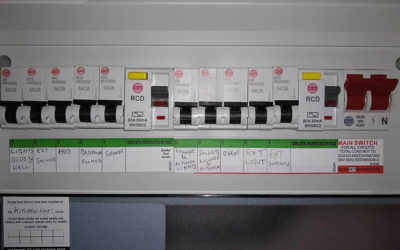How do I know that my boiler needs re-pressurising?
In most cases, you will suddenly discover that you have no hot water or heating, and your boiler is not working.
There are many things that cause a Boiler to stop working. Most of them will require an engineer to come out and repair the fault. However, by far the most common issue to stop a boiler working is a drop in boiler pressure. This is something that you can rectify yourself.
In fact the pressure on your boiler is something that you really should be aware of and check on a regular basis. If the pressure is constantly dropping and you are regularly having to re-pressurise your boiler, that indicates that there is an underlying problem, and you should call in a Gas-Safe Engineer to investigate and rectify the problem.
How do I read my Boiler Pressure?
Most Boilers have some kind of pressure gauge on them, which gives you an indication of the boiler pressure. They usually have a helpful Green section which indicates a safe operating pressure, and a Red section, which indicates that the pressure is too high or too low. They also often have some lines, to indicate a normal pressure. The needle should be slightly above this normal level, or, on some dials, between 1 & 2.
If the needle has fallen below 1, (or the line), then the boiler pressure is too low and needs to be increased.
If the needle is in the high Red section, your pressure is too high. The boiler should rectify this problem itself by dumping (usually very hot) water out of the system through a Pressure Relief Valve. You may see this happening on an outside wall of your house. If this does happen, turn the boiler off and call an engineer.
Pressure Gauge
Pressure Relief Valve
Outlet pipe
How do I re-pressurise my Boiler?
If you’re lucky enough to still have the manual that came with your boiler, the instructions will be found there.
Failing that, there is a lot of information on the web to help with re-pressurising your boiler. Each make (and sometimes model) of boiler is different, so it is not possible to give a one-size-fits-all explanation.
We thought that it would be more helpful to provided a series of links to different makes of boiler below for you to find your own model and instructions and follow them yourselves. We have also posted links to some useful videos:
Older style Worcester-Bosch Boilers have a slightly awkward Filling-Key system. This video shows how to operate it.
Newer style Worcester-Bosch Boilers have an Internal filling system, which is much easier to operate. This video shows you how it works:
Viessmann Boilers have some help on their website. Here’s the video guide to repressurising:
A list of Viessmann Error Codes and their meaning. In most cases, you should call a Gas-Safe Engineer:
A list of Potterton Error Codes and their meaning. In most cases, you should call a Gas-Safe Engineer:
Potterton & Baxi Boilers are extremely similar. On a Potterton Boiler you may get the error code: E119 to tell you that the pressure is low
A list of Potterton Error Codes and their meaning. In most cases, you should call a Gas-Safe Engineer:
A video to show how to repressurise an Ideal Boiler:
Ideal also have a useful information page on their website which gives support for lots of different issues:
Baxi don’t give a lot of help on their website, but this video shows how to re-pressurise their boilers:
A list of Baxi Error Codes and their meaning. In most cases, you should call a Gas-Safe Engineer:













0 Comments